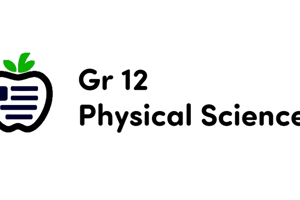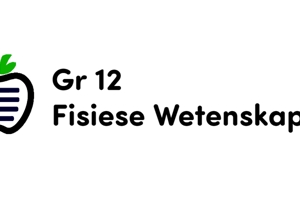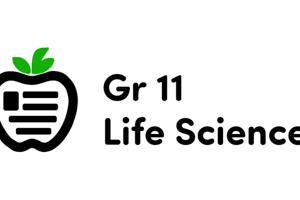Podcast
Questions and Answers
What is the relationship between the pressure, volume, temperature, and number of moles of a gas, as described by the ideal gas law?
What is the relationship between the pressure, volume, temperature, and number of moles of a gas, as described by the ideal gas law?
- $P = \frac{nRT}{V}$
- $V = \frac{nRT}{P}$
- $n = \frac{PV}{RT}$
- $PV = nRT$ (correct)
What is the volume of one mole of an ideal gas at Standard Temperature and Pressure (STP)?
What is the volume of one mole of an ideal gas at Standard Temperature and Pressure (STP)?
- 20.8 dm³
- 22.4 dm³ (correct)
- 24.5 dm³
- 26.1 dm³
What is the purpose of determining the molar mass of a reactant in a gaseous reaction?
What is the purpose of determining the molar mass of a reactant in a gaseous reaction?
- To calculate the volume of the reactant
- To calculate the number of moles of the reactant (correct)
- To calculate the ideal gas constant
- To determine the stoichiometric ratios
What is the formula used to calculate the number of moles of a reactant, given its mass and molar mass?
What is the formula used to calculate the number of moles of a reactant, given its mass and molar mass?
What is the purpose of using the stoichiometric ratios in a gaseous reaction?
What is the purpose of using the stoichiometric ratios in a gaseous reaction?
What is the next step after determining the number of moles of the reactant in a gaseous reaction?
What is the next step after determining the number of moles of the reactant in a gaseous reaction?
What is the role of the ideal gas law in solving problems involving gaseous reactions?
What is the role of the ideal gas law in solving problems involving gaseous reactions?
What is the purpose of calculating the number of moles of the gaseous product in a gaseous reaction?
What is the purpose of calculating the number of moles of the gaseous product in a gaseous reaction?
What is the primary application of stoichiometry in gaseous reactions?
What is the primary application of stoichiometry in gaseous reactions?
What is the unit of measurement for the molar volume at STP?
What is the unit of measurement for the molar volume at STP?
What is the first step in solving problems involving gaseous reactions?
What is the first step in solving problems involving gaseous reactions?
What is the ideal gas constant (R) used for?
What is the ideal gas constant (R) used for?
What is the purpose of calculating the number of moles of the gaseous product?
What is the purpose of calculating the number of moles of the gaseous product?
What is the unit of measurement for the mass of a reactant?
What is the unit of measurement for the mass of a reactant?
What is the primary assumption of the ideal gas law?
What is the primary assumption of the ideal gas law?
What is the relationship between the number of moles of a reactant and the number of moles of a gaseous product?
What is the relationship between the number of moles of a reactant and the number of moles of a gaseous product?
What is the primary application of the ideal gas law in solving problems involving gaseous reactions?
What is the primary application of the ideal gas law in solving problems involving gaseous reactions?
A gaseous reaction involves the reactant A, with a molar mass of 40 g/mol, and the product B. If 20 g of A reacts to form 11.2 dm³ of B at STP, what is the mole ratio of A to B?
A gaseous reaction involves the reactant A, with a molar mass of 40 g/mol, and the product B. If 20 g of A reacts to form 11.2 dm³ of B at STP, what is the mole ratio of A to B?
What is the consequence of assuming ideal gas behavior in a gaseous reaction?
What is the consequence of assuming ideal gas behavior in a gaseous reaction?
In a gaseous reaction, the reactant C has a mass of 15 g and a molar mass of 30 g/mol. If the reaction produces 3.36 dm³ of the product D at STP, what is the mole ratio of C to D?
In a gaseous reaction, the reactant C has a mass of 15 g and a molar mass of 30 g/mol. If the reaction produces 3.36 dm³ of the product D at STP, what is the mole ratio of C to D?
What is the primary advantage of using the molar volume at STP in solving problems involving gaseous reactions?
What is the primary advantage of using the molar volume at STP in solving problems involving gaseous reactions?
In a gaseous reaction, the reactant E has a mass of 25 g and a molar mass of 50 g/mol. If the reaction produces 4.48 dm³ of the product F at STP, what is the number of moles of F produced?
In a gaseous reaction, the reactant E has a mass of 25 g and a molar mass of 50 g/mol. If the reaction produces 4.48 dm³ of the product F at STP, what is the number of moles of F produced?
What is the relationship between the volume of a gaseous reactant and the volume of a gaseous product at STP?
What is the relationship between the volume of a gaseous reactant and the volume of a gaseous product at STP?
What is the primary limitation of the ideal gas law in solving problems involving gaseous reactions?
What is the primary limitation of the ideal gas law in solving problems involving gaseous reactions?




